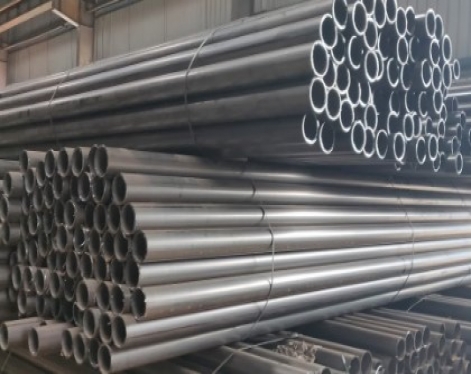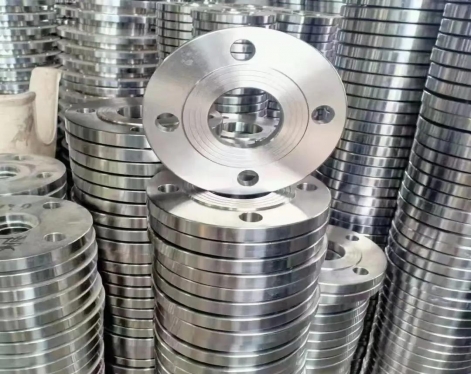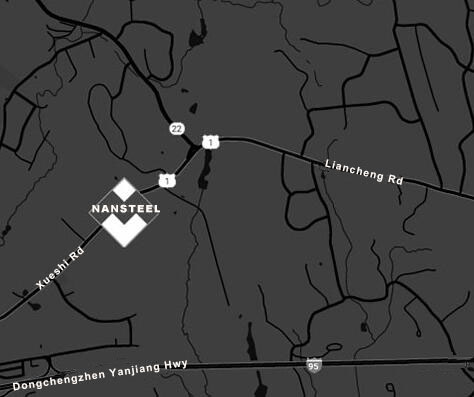Mild steel casing pipe, as its name suggests, is closely associated with low-carbon steel. It is manufactured from this steel through specialized processing. Due to its low carbon content, mild steel presents a unique characteristic among steel materials. While inheriting some of the properties of mild steel, mild steel casing pipe has been endowed with new capabilities through specialized processing, making it an indispensable component in numerous fields. Like a low-key yet powerful "unsung hero," it's not often mentioned, yet it quietly plays a key role in industrial production, construction, and other fields. Let's take a closer look at its characteristics, processing techniques, and specific application scenarios.
Unique properties of mild steel casing pipe
1. Good weldability: low carbon content, not easy to crack during welding, suitable for various welding methods.
2. Excellent plasticity and ductility: easy to cold work, bend and form, and easy to install.
3. Higher toughness: not easy to crack under low temperature or impact load, ensuring structural safety.
4. Moderate strength: meets the needs of medium and low pressure transmission and structural support.
5. Good surface treatment performance: can be galvanized, sprayed or anti-corrosion treated to extend service life.
6. High economic efficiency: low raw material cost, good processing performance, and high overall cost performance.

Production process of mild steel casing pipe
The production process of mild steel casing pipe is rigorous and complex. Each step precisely affects the final quality and performance of the product. The following is an introduction.
The first step is heating the billet. High-quality low-carbon steel billets are selected and placed in a furnace, where they are heated to the appropriate temperature, typically between 1100 and 1300°C. This temperature range maintains the billet's excellent plasticity, facilitating subsequent processing. It also reduces internal stress and creates a more uniform internal structure, laying the foundation for subsequent processing.
Next comes the piercing process. The heated billet is quickly fed to a piercing machine, which uses powerful pressure and a special die to create a circular hole in the center of the billet, giving it the initial shape of a casing pipe. This step requires extremely high precision from the equipment and skilled operators; even the slightest deviation can result in uneven casing pipe wall thickness, impacting product quality.
Next comes the rolling process, where the pierced tube enters the rolling mill. The mill applies pressure to the tube through multiple rollers, further stretching and shaping it to the desired diameter and wall thickness. During this process, parameters such as the roller speed, pressure, and number of rolling passes must be precisely controlled to ensure the dimensional accuracy and surface quality of the casing pipe.
The final stage is sizing. After rolling, the casing pipe passes through a sizing mill, where it is precisely calibrated to the required outer diameter. During the sizing process, the casing pipe is rigorously inspected. If any dimensional deviation is detected, the sizing mill parameters are adjusted promptly to ensure that every mild steel casing pipe meets quality standards.
The main application areas of mild steel casing pipe
Construction: Used in scaffolding, support structures, railings, and pipe routing.
Machinery: Used in equipment supports, racks, and low-pressure fluid pipelines.
Power engineering: Used for cable protection casing and line conduit.
Oil and gas industry: Used as casing or protective conduit in low-pressure, non-corrosive environments.
Automotive and transportation equipment: Used in chassis components, exhaust systems, and other applications.
Agriculture and infrastructure: Used in irrigation pipe networks, greenhouse frames, and fencing structures.
Home appliance and furniture Manufacturing: Used as support pipes, decorative pipes, and connectors.
Read more: Carbon steel casing pipe
Unique properties of mild steel casing pipe
1. Good weldability: low carbon content, not easy to crack during welding, suitable for various welding methods.
2. Excellent plasticity and ductility: easy to cold work, bend and form, and easy to install.
3. Higher toughness: not easy to crack under low temperature or impact load, ensuring structural safety.
4. Moderate strength: meets the needs of medium and low pressure transmission and structural support.
5. Good surface treatment performance: can be galvanized, sprayed or anti-corrosion treated to extend service life.
6. High economic efficiency: low raw material cost, good processing performance, and high overall cost performance.

Production process of mild steel casing pipe
The production process of mild steel casing pipe is rigorous and complex. Each step precisely affects the final quality and performance of the product. The following is an introduction.
The first step is heating the billet. High-quality low-carbon steel billets are selected and placed in a furnace, where they are heated to the appropriate temperature, typically between 1100 and 1300°C. This temperature range maintains the billet's excellent plasticity, facilitating subsequent processing. It also reduces internal stress and creates a more uniform internal structure, laying the foundation for subsequent processing.
Next comes the piercing process. The heated billet is quickly fed to a piercing machine, which uses powerful pressure and a special die to create a circular hole in the center of the billet, giving it the initial shape of a casing pipe. This step requires extremely high precision from the equipment and skilled operators; even the slightest deviation can result in uneven casing pipe wall thickness, impacting product quality.
Next comes the rolling process, where the pierced tube enters the rolling mill. The mill applies pressure to the tube through multiple rollers, further stretching and shaping it to the desired diameter and wall thickness. During this process, parameters such as the roller speed, pressure, and number of rolling passes must be precisely controlled to ensure the dimensional accuracy and surface quality of the casing pipe.
The final stage is sizing. After rolling, the casing pipe passes through a sizing mill, where it is precisely calibrated to the required outer diameter. During the sizing process, the casing pipe is rigorously inspected. If any dimensional deviation is detected, the sizing mill parameters are adjusted promptly to ensure that every mild steel casing pipe meets quality standards.
The main application areas of mild steel casing pipe
Construction: Used in scaffolding, support structures, railings, and pipe routing.
Machinery: Used in equipment supports, racks, and low-pressure fluid pipelines.
Power engineering: Used for cable protection casing and line conduit.
Oil and gas industry: Used as casing or protective conduit in low-pressure, non-corrosive environments.
Automotive and transportation equipment: Used in chassis components, exhaust systems, and other applications.
Agriculture and infrastructure: Used in irrigation pipe networks, greenhouse frames, and fencing structures.
Home appliance and furniture Manufacturing: Used as support pipes, decorative pipes, and connectors.
Read more: Carbon steel casing pipe









